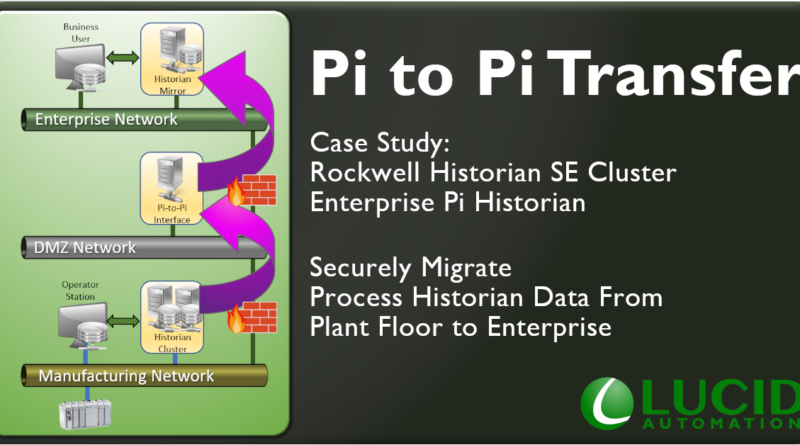Pi to Pi Historian Transfer
Some tips and performance metrics for a project we just completed replicating a Historian Collective from plant floor securely up to the Enterprise Network using the Pi to Pi interface.
The architecture was a pair of Rockwell Historian SE servers configured as a Pi Collective on the manufacturing network. The data was used by both the operations team and the business teams. This introduced two vectors for production interruption: loading due to administrative queries and security in accessing the data from the corporate network.
A new pi-to-pi interface placed in the DMZ with a static route to the Historian SE collective. Firewall rules, Pi Trust, and a read-only identity was setup. The second firewall and route was made to the Enterprise historian.
For performance, at a Pi-to-Pi scan rate of 15s @5k tags resulted in only a 4% CPU load increase and roughly 90kB/s additional bandwidth for the sync. Points in the collective would back fill in the enterprise in event of network event (ask me how I know!).
Benefits of this arrangement were immediate. Old reporting tools “just worked” when pointed to the new historian. The direct route to the manufacturing network was closed.
If you’d like to know more, please hit us up direct.

